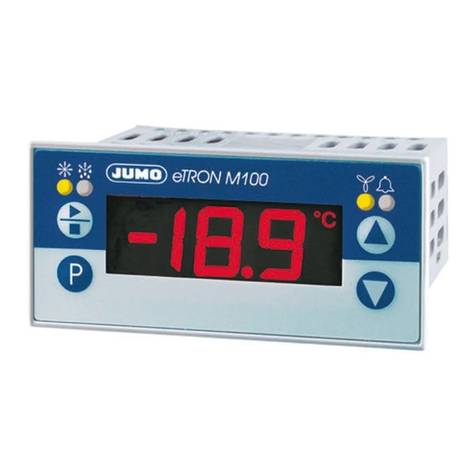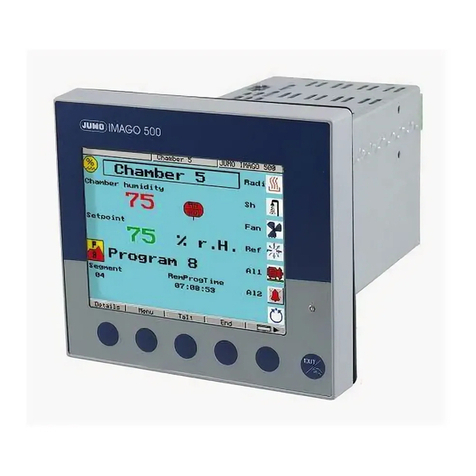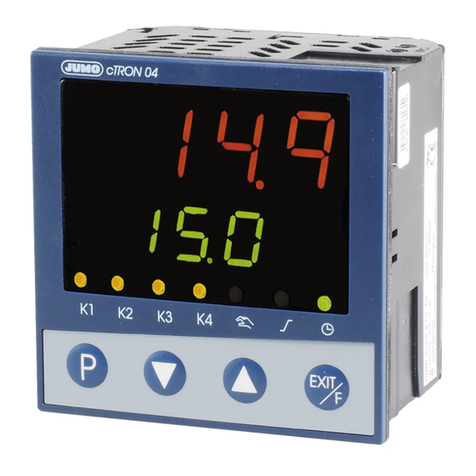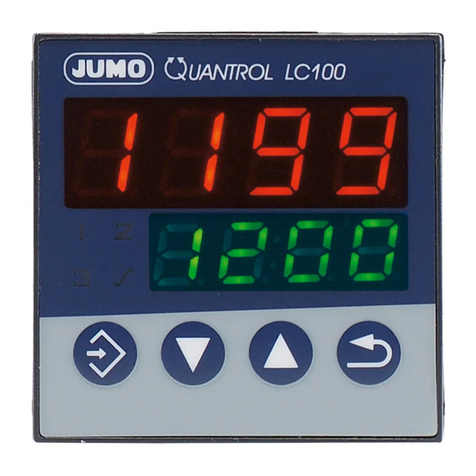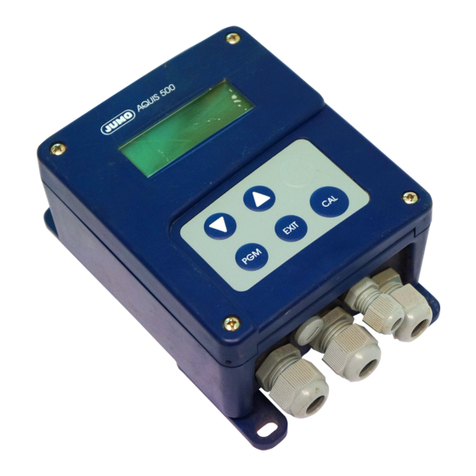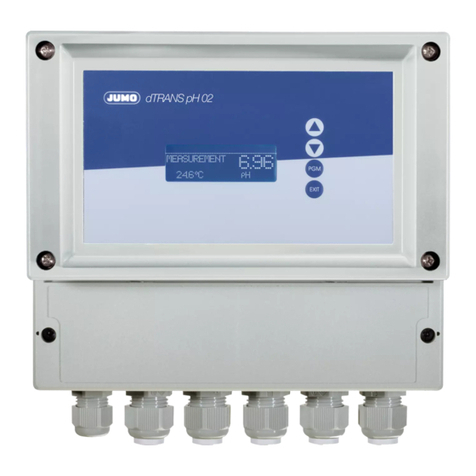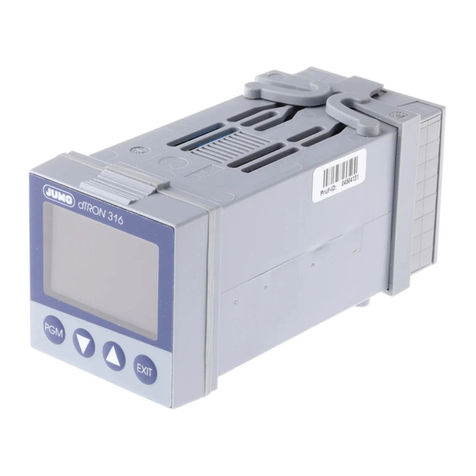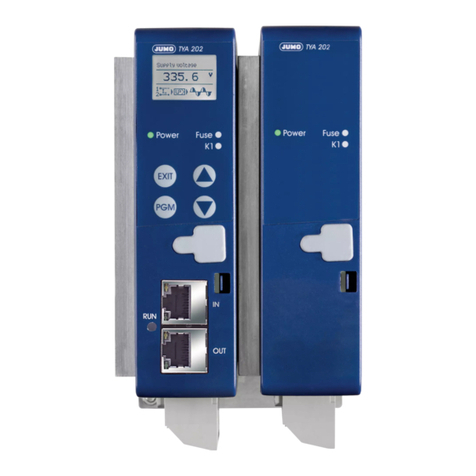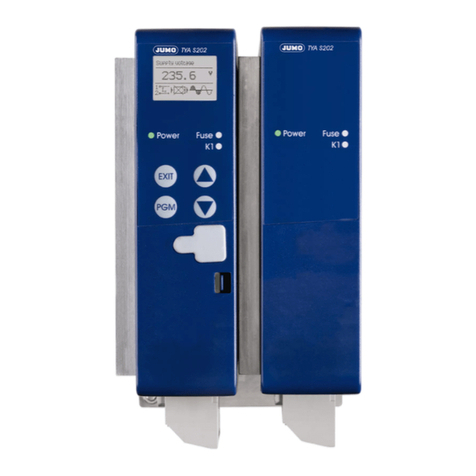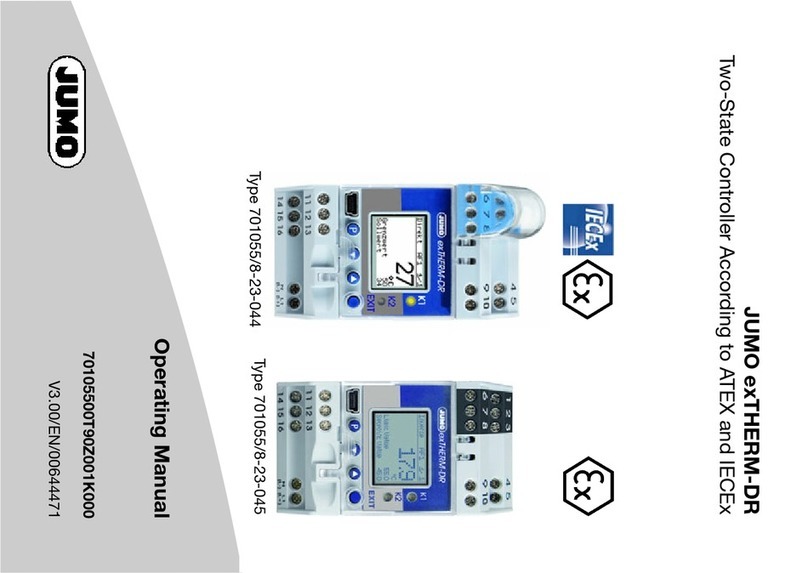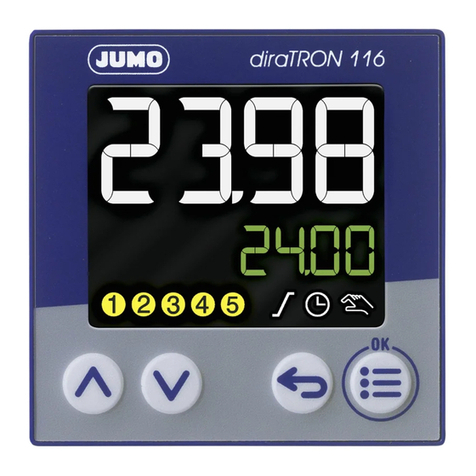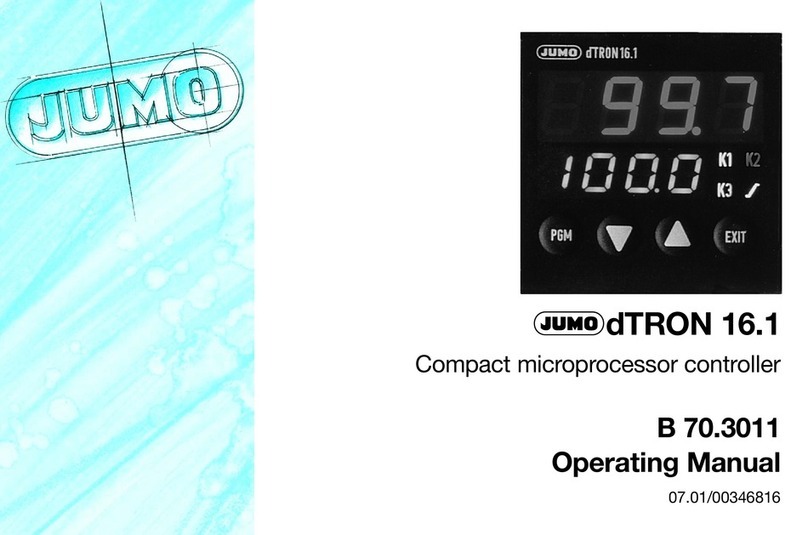
1 Introduction
6
1.5.2 Order details
(1) Basic type
702110 Type 702110 (format 132: 48 x 24 mm)
1 analog input, 2 digital inputs (digital input 1, alternative to logic output), 1 relay (N/O
contact), 1 logic output 0/14 V (alternative to digital input 1)
incl. timer, ramp function, and program function
702111 Type 702111 (format 116: 48 x 48 mm)
1 analog input, 2 digital inputs (digital input 1, alternative to logic output), 2 relays (N/
O contact), 1 logic output 0/14 V (alternative to digital input 1)
incl. timer, ramp function, and program function
702112 Type 702112 (format 108H: 48 x 96 mm)
1 analog input, 2 digital inputs (digital input 1, alternative to logic output), 2 relays (N/
O contact), 1 logic output 0/14 V (alternative to digital input 1)
incl. timer, ramp function, and program function
702113 Type 702113 (format 108Q: 96 x 48 mm)
1 analog input, 2 digital inputs (digital input 1, alternative to logic output), 2 relays (N/
O contact), 1 logic output 0/14 V (alternative to digital input 1)
incl. timer, ramp function, and program function
702114 Type 702114 (format 104: 96 x 96 mm)
1 analog input, 2 digital inputs (digital input 1, alternative to logic output), 2 relays (N/
O contact), 1 logic output 0/14 V (alternative to digital input 1)
incl. timer, ramp function, and program function
(2) Version
8 Standard with default settingsa
9 Customer-specific configuration (specifications in plain text)
(3) Option 1b
0 Not used
1 1 relay (N/O contact) (only for type 702111)
2 1 logic output 0/14 V (only for types 702111, 702112, 702113, 702114)
4 1 RS485 interface (Modbus RTU)
(4) Option 2a
0 Not used
1 1 relay (N/O contact)
2 1 logic output 0/14 V
3 1 analog output
(5) Option 3a (only for types 702112, 702113, 702114)
0 Not used
1 1 relay (N/O contact)
2 1 logic output 0/14 V
5 1 PhotoMOS® relayc
(6) Option 4a (only for types 702112, 702113, 702114)
0 Not used
1 1 relay (N/O contact)
2 1 logic output 0/14 V
5 1 PhotoMOS® relaya
6 1 relay (N/O contact) with longer contact life
